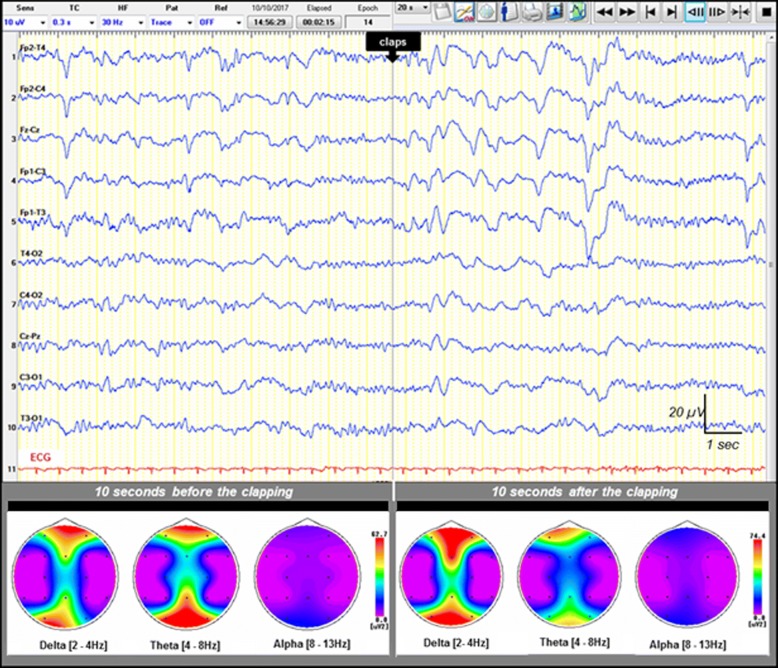Fig. 1.
Example of a reactive electroencephalogram (EEG) following auditory stimulation (claps) of a patient with impaired consciousness. Upper: A 20-second epoch EEG sample showing a diffuse and synchronous slowing of the EEG background activity, appearing immediately after the auditory stimulus (claps) in an ICU patient with sepsis-associated encephalopathy. Recording: 20 mm/s, sensitivity: 10 μV/mm; filter settings: 0.5–70 Hz. Lower: EEG spectral power featuring topographic mapping of power of each main EEG frequency band (delta, theta, and alpha) computed 10 seconds before and 10 seconds after the auditory stimulus onset (claps). EEG changes from a theta-dominant frequency (before stimulation) into a delta-dominant one (after stimulation). Higher-power values are shown in warm colors, and cool colors depict lower power

